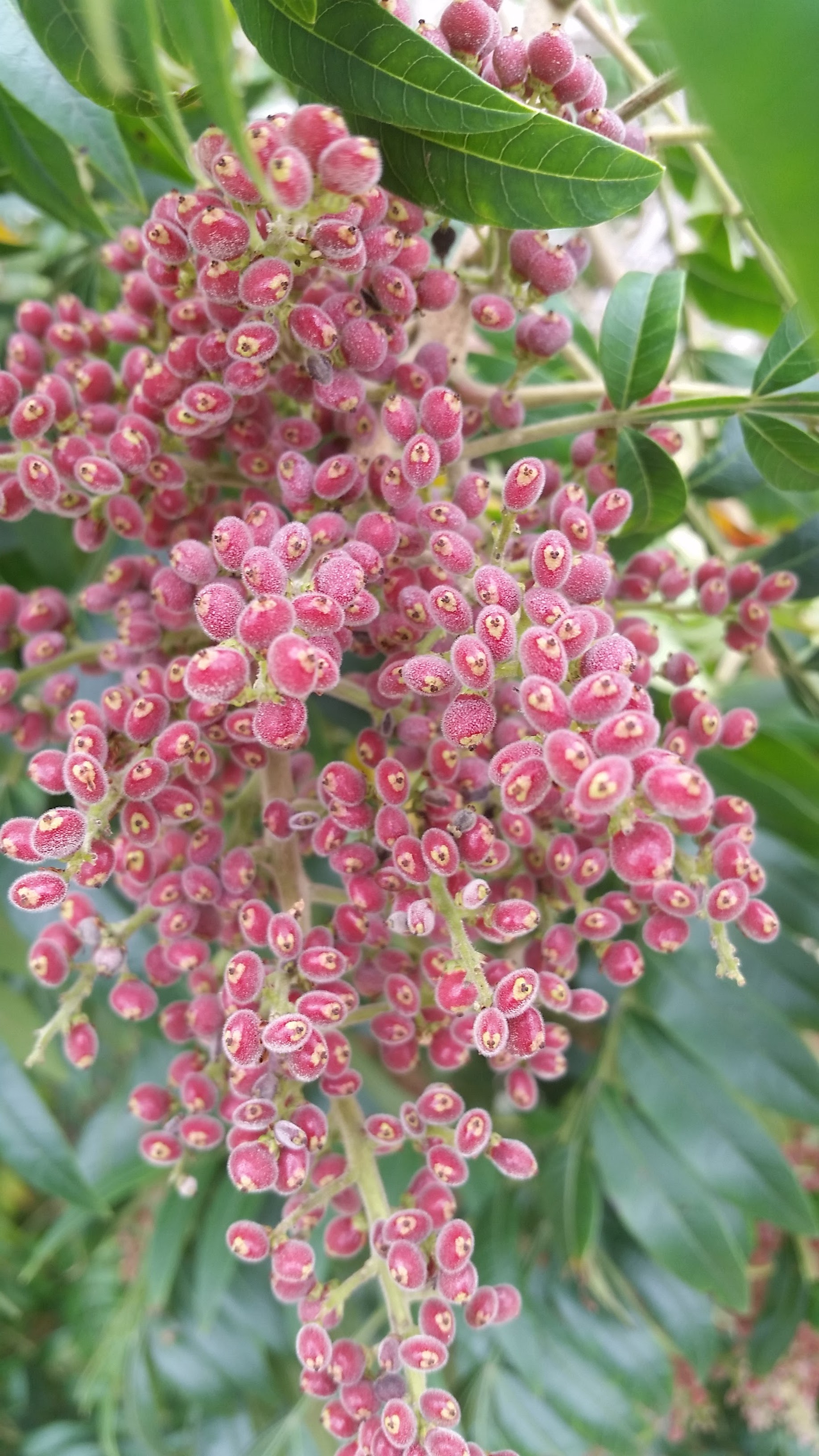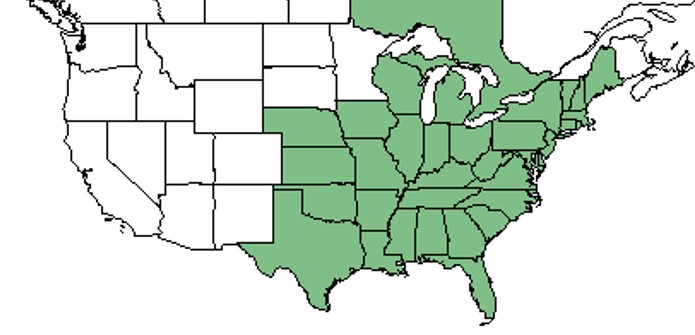Rhus copallinum
| Rhus copallinum | |
|---|---|

| |
| Photo taken by Michelle Smith | |
| Scientific classification | |
| Kingdom: | Plantae |
| Division: | Tracheophyta- Vascular plants |
| Class: | Magnoliopsida – Dicotyledons |
| Order: | Sapindales |
| Family: | Anacardiaceae |
| Genus: | Rhus |
| Species: | R. copallinum |
| Binomial name | |
| Rhus copallinum L. | |

| |
| Natural range of Rhus copallinum from USDA NRCS Plants Database. | |
Common names: Winged sumac, Flameleaf sumac, Shining sumac
Contents
Taxonomic notes
Synonym: Rhus copallina L.
There are three varieties: Rhus copallinum var. copallinum, R. copallinum var. leucantha, and R. copallinum var. latifolia[1].
Description
"Upright shrubs or small trees, not poisonous. Leaves once-pinnately compound. Inflorescence a terminal panicle. Drupes red, ripening in the autumn. Seeds smooth. Flowers produced after the leaves." - Radford et al 1964
"Rhizomatous shrub or small tree to 7 m tall; stems densely short-pubescent. Leaflets 9-23 (mostly 9-11), sessile, oblong to elliptic, 3-8 cm long, 1-4 cm wide, acute to acuminate, entire or less frequently crenate to serrate, base cuneate to rarely rounded, glabrous or densely pubescent beneath; rachis winged. Panicle 0.5-3 dm long and usually as broad. Drupe densely short-pubescent, 3-4 mm broad. Seeds 2.5-3 mm long." - Radford et al 1964
Distribution
Ecology
Habitat
R. copallinum habitats include old fields, oak-hickory woods, oak scrubs, marsh banks, roadsides, and sandridges[2].
Phenology
Blooms July to August[3].
Seed dispersal
Seeds are dispersed by birds[1].
Seed bank and germination
The rhizomes, flowers, fruits, senescent leaves and leaf litter contain toxins that significantly inhibit both seed germination and seedling growth of climax prairie and weedy species[4].
Fire ecology
Fire stimulates root and root collar sprouting along with enhancing germination, making this a fire-climax species. Density declines 3 to 4 years following a fire, with fire exclusion reducing density and cover[1].
Pollination
Use by animals
The foliage is a food source for the caterpillar Pyrrhia umbra who eat the flowers and drupes[5]. The berries are eaten by wild turkeys and songbirds[1]. Birds have been observed to choose fruits of R. copallina rather than fruits of R. glabra when they were both available as winter foods. This could be due to the higher caloric value and larger fruits of R. copallina[6].
Diseases and parasites
Fusarium wilt infects the roots, causing the leaves to droop and wilt[7].
Conservation and Management
Cultivation and restoration
Photo Gallery
References and notes
Radford, Albert E., Harry E. Ahles, and C. Ritchie Bell. Manual of the Vascular Flora of the Carolinas. 1964, 1968. The University of North Carolina Press. 678. Print.
- ↑ 1.0 1.1 1.2 1.3 [[1]]Accessed: March 10, 2016
- ↑ Florida State University Robert K. Godfrey Herbarium database. URL: http://herbarium.bio.fsu.edu. Last accessed: March 2016. Collectors: Loran C. Anderson, Tom Barnes, Kathy Craddock Burks, G. Fleming, P. Genelle, Robert K. Godfrey, Gary R. Knight. States and Counties: Florida: Florida: Citrus, Franklin, Gadsden, Jackson, Jefferson, Leon, Liberty, St. Johns, Wakulla.
- ↑ [[2]]Missouri Botanical Gardens. Accessed: March 7, 2016
- ↑ Petranka, J. W. and J. K. McPherson (1979). "The Role of Rhus Copallina in the Dynamics of the Forest-Prairie Ecotone in North-Central Oklahoma." Ecology 60(5): 956-965.
- ↑ [[3]]Accessed: March 10, 2016
- ↑ Graber, J. W. and P. M. Powers (1981). "Dwarf Sumac as Winter Bird Food." The American Midland Naturalist 105(2): 410-412.
- ↑ [[4]]University of Florida Extension Accessed: March 10, 2016